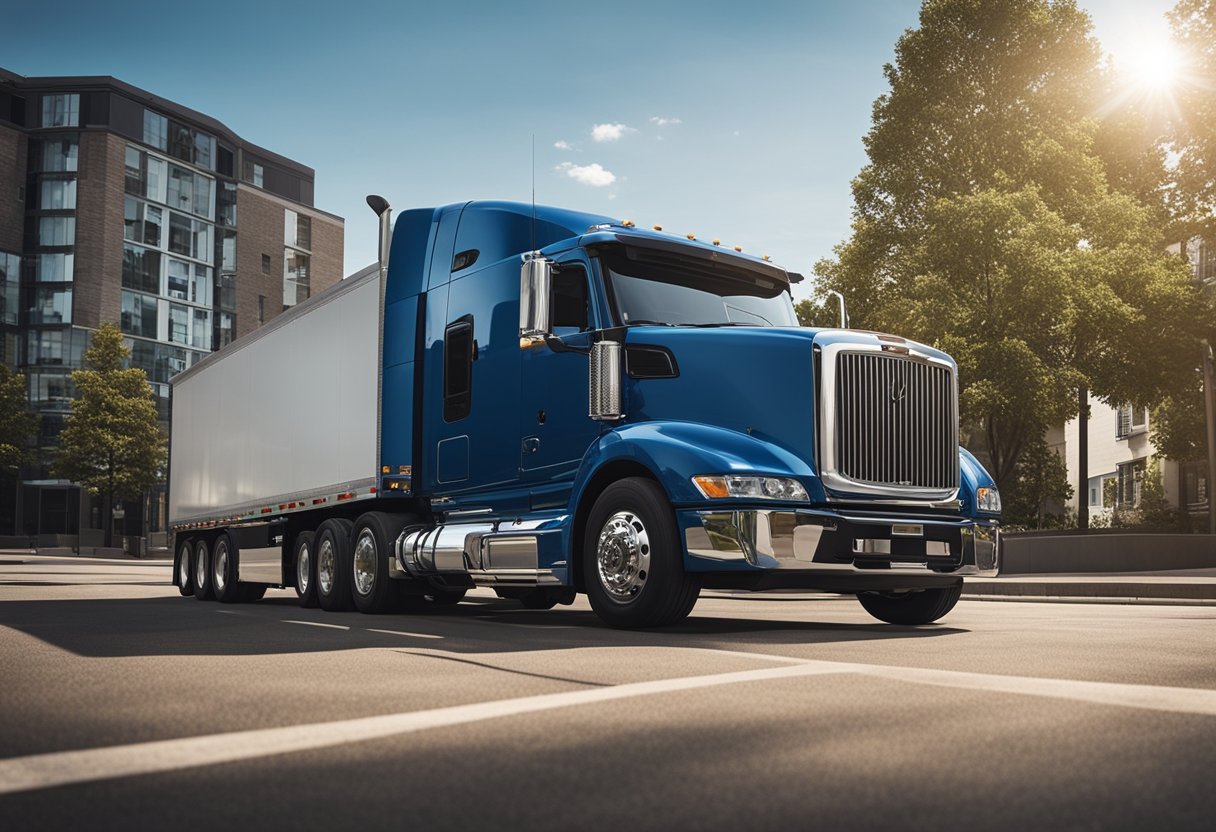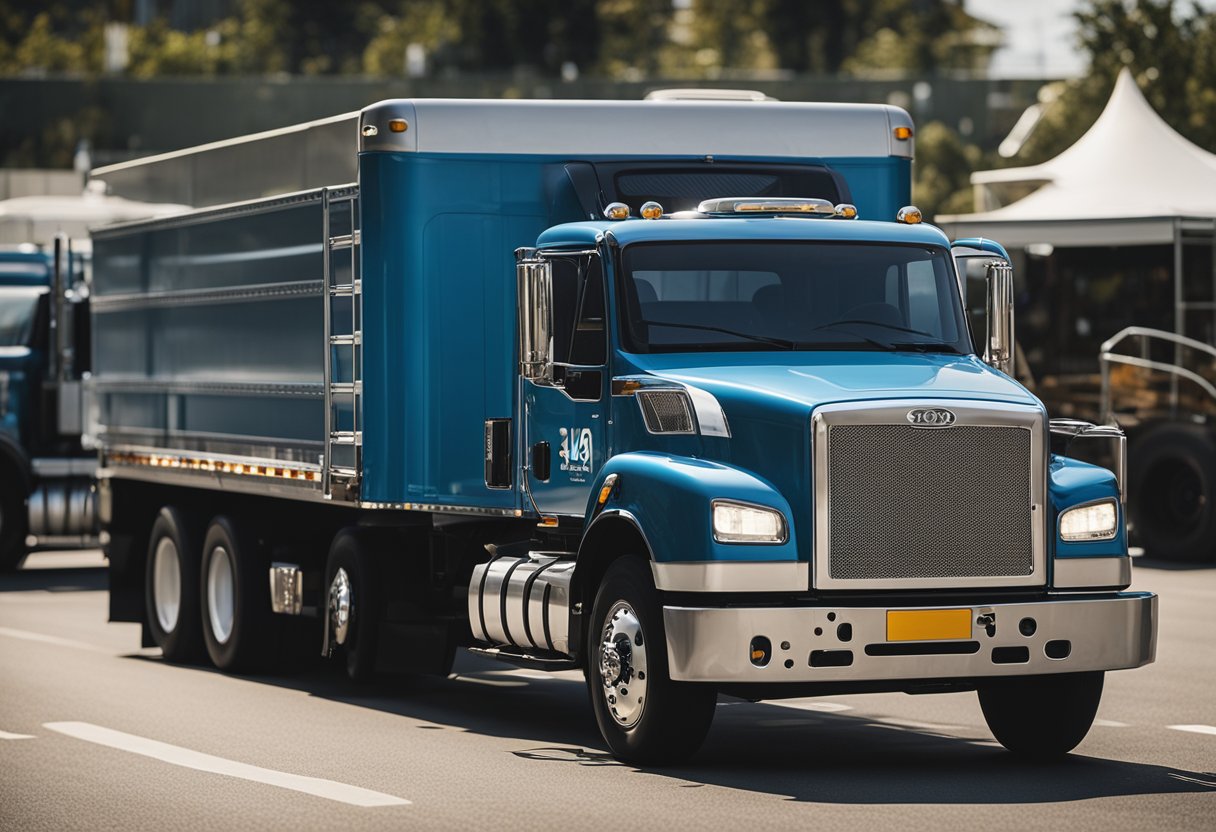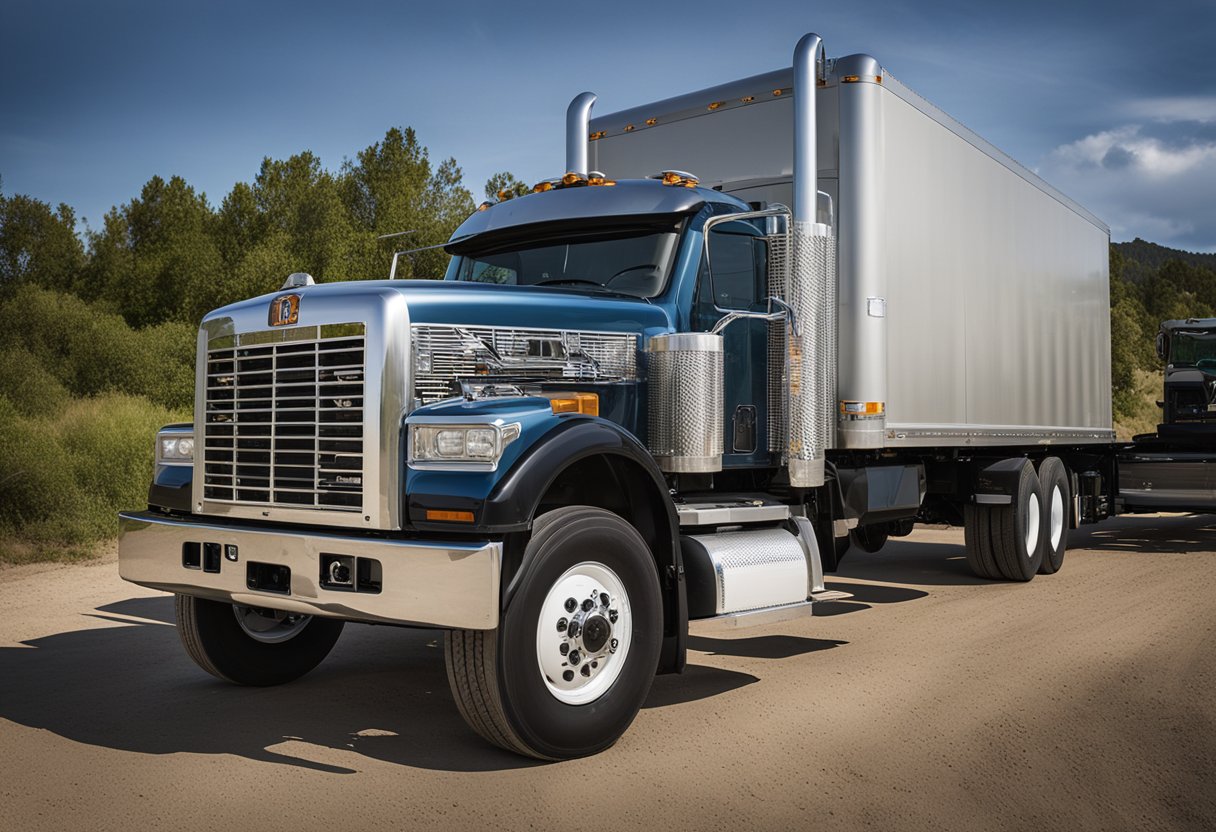When discussing the weight of a 1500 series truck, it’s essential to consider the various factors that contribute to its mass. These trucks, commonly referred to as half-ton pickups, can have significant variance in weight depending on the model, trim level, engine size, and additional equipment. Generally, the curb weight of a 1500 truck – which is the weight of the vehicle with standard equipment and all necessary operating consumables, but not passengers or cargo – can range broadly. Understanding the specific weight of a model is crucial for purposes such as towing, load carrying capacity, and compliance with road weight regulations.

Manufacturers of 1500 series trucks provide different models, each designed to meet specific needs and preferences. The weight of a particular model can also vary with the inclusion of different features and packages. Therefore, while a base model of a 1500 series truck might weigh around 4,500 to 5,300 pounds (approximately 2,041 to 2,404 kilograms), the addition of heavy-duty performance features, luxury trim packages, and other equipment can increase the weight significantly. It’s important for potential buyers and current owners to be aware of the exact weight of their vehicles, as it affects various aspects of ownership and usage, including fuel economy, handling, and even insurance costs.
Contents
Key Takeaways
- 1500 series trucks, or half-ton pickups, have varying weights based on multiple factors.
- A base model’s weight typically starts around 4,500 to 5,300 pounds, increasing with added features.
- The truck’s weight influences towing capacity, fuel efficiency, and ownership expenses.
Overview of 1500 Series Trucks

When I consider the 1500 series trucks, I’m referring to light-duty pickups designed for personal use and light hauling. Generally, these trucks can weigh between 4,500 to 5,300 pounds. The term ‘1500’ usually suggests a half-ton truck, which classifies the vehicle’s payload capacity, not its actual weight.
The Chevrolet Silverado 1500 and its competitor, the Ford F-150, are prominent members of this category, providing a good mix of efficiency and power. For the Silverado 1500, which I have come to find interesting, the curb weight ranges depending on the model, trim, and equipment.
Take the Ram 1500, for instance, another key player. This truck varies in weight depending on the configuration but stays within the expected range for its class. Dodge, closely associated with Ram, previously manufactured the truck before Ram became a standalone brand.
Ford also has offerings in this category, with the renowned F-150, and larger alternatives like the F-250 for more demanding tasks. While the F-150 aligns with the half-ton segment, the F-250 steps into the heavy-duty realm, often called three-quarter-ton trucks, like the Chevrolet Silverado 3500HD and the Ram 3500 that are designed for more robust jobs.
Here’s a quick breakdown of average weights:
- Chevrolet Silverado 1500: 4,500 – 5,300 lbs
- Ford F-150: 4,069 – 5,697 lbs
- Ram 1500: 4,798 – 5,372 lbs
Size and configuration greatly influence vehicle weight. A crew cab model will generally be heavier than a regular cab variant due to the added materials and space. Options like four-wheel drive and additional on-board equipment will also add to the overall weight. The precise weight of any specific truck can be found in its owner’s manual or a detailed specifications sheet.
Specific Models and Their Weights

In this section, I’ll be detailing the weights of various 1500 model trucks. Each model is known for specific attributes and capabilities, and understanding these weights is crucial for purposes like towing and transportation.
Chevrolet Silverado 1500
The Chevrolet Silverado 1500 typically weighs between 4,500 to 5,300 pounds. The exact weight can vary depending on the trim and configuration selected. With a variety of engine options and bed lengths, the Silverado’s weight can be somewhat customizable.
Ram 1500
For the Ram 1500, the weight ranges from approximately 4,800 to 5,900 pounds. Formerly known as the Dodge Ram 1500, this truck balances power with efficiency and maintains a competitive weight class among light-duty trucks.
Ford F-150
The Ford F-150 is another leading model in the 1500 category, with weights starting at about 4,050 pounds and can go up to around 5,700 pounds depending on the configuration. Its aluminum body construction is a key factor in its weight and efficiency.
Other Models
Discussing other models, like the Chevrolet Silverado 3500HD or the Ram 3500, it’s important to note that these are heavier-duty trucks and can weigh significantly more than the 1500-series models. For instance, a Chevrolet Silverado 3500HD can tip the scales at well over 6,000 pounds, considerably heavier than its 1500 counterpart.
Weight Classifications and Terminology
https://www.youtube.com/watch?v=DG6rMcOdics&embed=true
Understanding the weight classifications of a 1500 truck involves knowing the various terms used to denote its capacity and limitations. Each term provides specifics that are crucial for safety and legal compliance.
Curb Weight
The curb weight of my truck refers to the vehicle’s total weight without any passengers or cargo but does include all standard equipment and necessary operational fluids. It’s the basic weight of the truck, often used as a starting point for calculating other capacities.
Payload Capacity
When I talk about payload capacity, I’m referring to the maximum weight my truck can carry in terms of passengers and cargo. This does not include towing, but instead focuses on what can be safely loaded onto the truck’s bed and cabin.
Towing Capacity
Towing capacity is the maximum weight my truck can tow behind it. This figure is crucial for anyone looking to haul trailers, boats, or other vehicles, and exceeds the payload capacity as it pertains to an external load pulled by the truck’s towing hitch.
GVWR
The Gross Vehicle Weight Rating (GVWR) is a term that indicates the maximum permissible weight of my truck when fully loaded. This includes the curb weight plus payload, and not to be exceeded to maintain safety and avoid potential damage.
Engine and Performance Specs

When considering the weight of a 1500 truck, I must take into account the engine specifications, which play a crucial role. These specs significantly affect the truck’s performance, including its horsepower, torque, and fuel efficiency.
Engine Types
In my experience, 1500 trucks typically come equipped with a V6 or V8 engine. The engine type influences the truck’s capability for hauling and towing, as well as its overall weight. V6 engines usually make the vehicle lighter and more fuel-efficient, while V8 engines add more power at the cost of extra weight.
Horsepower and Torque
The horsepower and torque generated by a 1500 truck are indicative of its performance capabilities. Typically, a V8 engine will produce more horsepower and torque than a V6, allowing for greater towing power. For instance, I’ve seen figures ranging from 240 to 420 horsepower, and torque numbers between 269 to 460 lb-ft, depending on the specific model and engine configuration.
Fuel Type and Efficiency
Fuel type is integral to the engine’s design. Most 1500 trucks use either gasoline or diesel. Gas engines are common and offer a balance between performance and efficiency. Diesel engines, on the other hand, tend to have higher torque ratings, which affords them increased towing capacity. I’ve noted that diesel engines also improve the truck’s fuel efficiency, especially under load. However, it’s important to mention that the engine weight of diesel trucks might be higher due to the more robust construction required for diesel combustion.
Dimensions and Capacities

When discussing the dimensions and capacities of a 1500 truck, it’s crucial to consider the variation depending on configuration. The numbers can change notably based on factors such as length, cabin size, and bed length.
Truck Length
The overall length of a 1500 truck can vary widely. For instance, a regular cab model is typically shorter compared to its crew cab and double cab counterparts. To give a clear example, a regular cab variant may measure around 229 inches (18.1 feet), while a crew cab can be significantly longer, around 241 inches (20.1 feet).
Bed Length
Moving on to the bed length, it’s an essential factor for cargo carrying capacity. Generally, there are three sizes:
- Short Box: Approximately 67 inches (5.58 feet)
- Standard Box: Roughly 79 inches (6.58 feet)
- Long Box: Around 98 inches (8.17 feet)
These dimensions can directly affect the truck’s utility and are chosen based on the required balance between hauling capacity and overall vehicle size.
Cabin Configurations
For the cabin configurations, I observe that the three primary types are:
- Regular Cab (Reg Cab): Seats up to 3 and does not have extra rear seat space. This configuration gives the maximum bed length potential.
- Double Cab: Offers additional rear seating compared to the regular cab, suited for up to six passengers, with a slightly shorter bed.
- Crew Cab (Quad Cab): Maximizes interior space for passengers, making it the largest cabin option, but it typically results in a shorter bed length to keep the overall vehicle size manageable.
Each configuration alters the truck’s curb weight, which can range from 4,500 to 5,300 pounds, impacting its payload and towing capacity.
Trim Levels and Packages

When discussing the weight of a 1500 truck, it is vital to consider the various trim levels and packages available, as they directly impact the overall weight. Different configurations offer additional features, which may alter the truck’s weight due to the inclusion of heavier materials or added equipment.
Base Trims
Tradesman: As the entry-level trim, the Tradesman affords a no-frills package that focuses on work utility. Typically, it lacks the additional weight from upscale materials or technology, keeping it lighter than more luxurious trims. The weight of a Tradesman trim would include basic interior features and standard engine specs.
Higher-End Options
Laramie: Upgrading to a Laramie trim introduces more advanced technology and higher quality materials, which add to the overall weight. Notable weight-adding features include a more complex infotainment system and enhanced interior comfort elements.
Lone Star: Exclusive to Texas, the Lone Star trim adds signature design elements and sometimes larger wheels that contribute to a moderate increase in weight compared to the base Tradesman option.
Rebel: Aimed at off-road capability, the Rebel trim includes heavier-duty equipment such as a reinforced suspension and skid plates, which incrementally raise the vehicle’s weight.
Limited: At the pinnacle of luxury, the Limited trim offers premium materials including leather seats and advanced technology features. These additions are the heaviest among the trim options, reflecting the trim’s status and features.
It is essential to note that the choice of additional packages, often tailored to enhance performance or comfort, will invariably affect the truck’s gross vehicle weight. For instance, a cooling package might be a common addition for a vehicle with a higher gross vehicle weight rating (GVWR).
Pricing and Ownership Costs
https://www.youtube.com/watch?v=2cnL4OtwFHo&embed=true
When considering the acquisition of a 1500 truck, I focus on two primary financial aspects: the market price and the subsequent ownership expenses. These factors are critical for budgeting and long-term planning.
MSRP and Offers
The Manufacturer’s Suggested Retail Price (MSRP) for a typical 1500 model truck often falls within the competitive range of vehicles in its class. Depending on the trim and options selected, this can vary significantly. At dealerships, I sometimes find special offers or incentives that reduce the initial purchase price, such as cash back or financing deals. It’s important to note that the final transaction price may also include additional destination charges, which cover the cost of transporting the vehicle to the dealership.
Ownership Costs
Ownership costs of a 1500 truck extend far beyond the MSRP. They encapsulate a variety of expenditures that span the lifetime of the vehicle. Here is a list of what I keep in mind:
- Fuel Efficiency: This is crucial as it directly impacts my ongoing costs. Trucks are generally more expensive to fuel than many passenger cars.
- Insurance: Given the value and weight of a 1500 truck, insurance premiums can be higher than those for smaller vehicles.
- Maintenance and Repairs: Maintenance for a truck can be slightly more costly due to its size and complexity. However, a solid basic warranty, often covering 3 yr./ 36,000 mi, helps alleviate some of these costs in the earlier years of ownership.
- Depreciation: Like all vehicles, trucks depreciate over time, affecting their resale value.
To summarize, when analyzing the pricing and ownership costs of a 1500 truck, I ensure to account for all potential expenses to get a comprehensive understanding of the financial commitment I’m undertaking. This includes being aware of both the upfront costs and the long-term financial implications of ownership.
Frequently Asked Questions

In this section, I’ll address some of the specific queries people often have about the weight aspects of 1500 series pickup trucks.
What is the average curb weight of a 1500 series pickup truck?
The average curb weight of a 1500 series pickup truck typically ranges from about 4,500 to 5,300 pounds, depending on the make, model, and equipment.
What is the weight range for a 2023 RAM 1500 truck?
A 2023 RAM 1500 truck has a weight range that varies from approximately 4,798 to 5,372 pounds, reflecting the diversity in trim levels and configurations.
How does the weight of a Chevy Silverado 1500 compare to other trucks in its class?
The weight of a Chevy Silverado 1500 is competitive within its class, generally falling within a range similar to equivalent models offered by other brands, such as Ford’s F-150 or GMC’s Sierra 1500.
What is the weight capacity of a RAM 1500?
The RAM 1500 boasts a payload capacity typically up to 2,300 pounds, while towing capacity can be as much as 12,750 pounds, depending on the specific model and engine.
Can you classify a 1500 truck as a half-ton pickup?
Yes, I can classify a 1500 truck as a half-ton pickup, which refers to its nominal payload capacity; however, most modern 1500 trucks exceed this traditional half-ton, or 1,000-pound, designation.
What is the curb weight of a RAM 1500 Crew Cab?
The curb weight of a RAM 1500 Crew Cab can vary but generally sits between about 5,232 and 5,372 pounds, again depending on the specific model and equipment.

